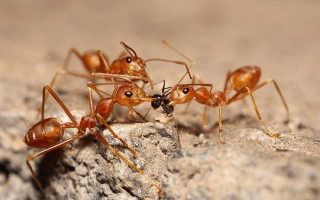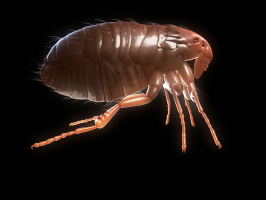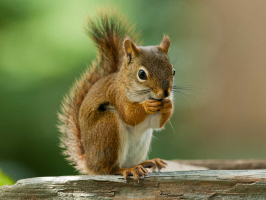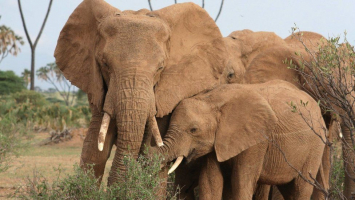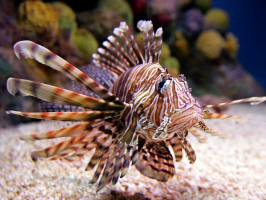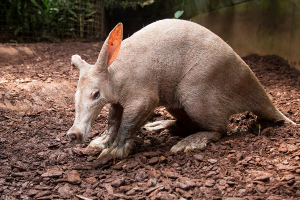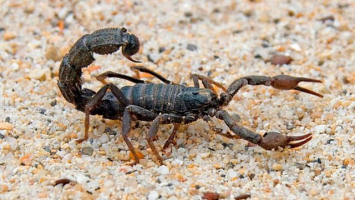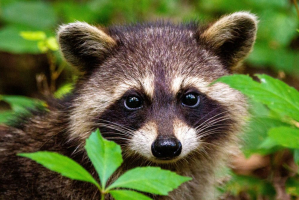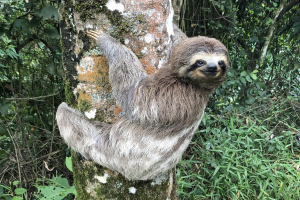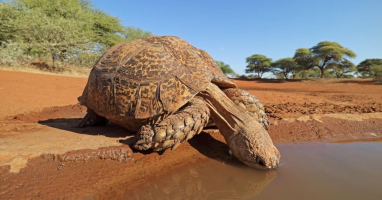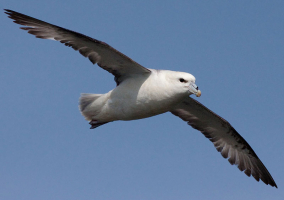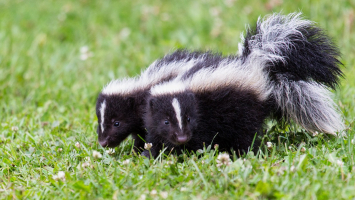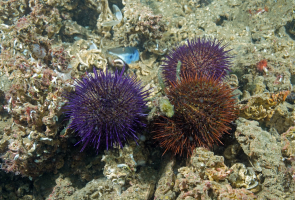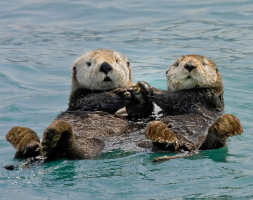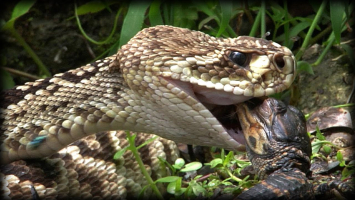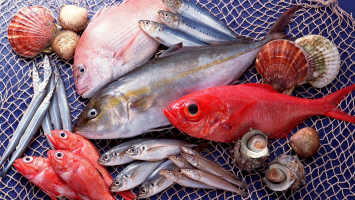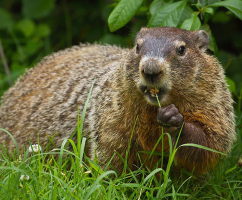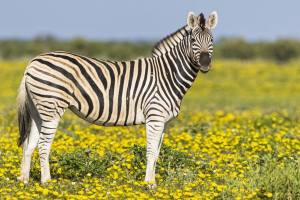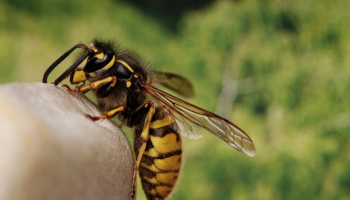Top 10 Predators of Frogs that Eat Frogs
Have you ever seen pictures of big, supposedly decent creatures eating with small, good-natured frogs? How are frogs eaten by them? They are not concerned ... read more...about being poisoned or the possibility of being eaten by another animal. Frogs are easy prey for many predators because of their tiny size, high population, and varied environment bait. These amphibians feed on frogs at every stage of development, including eggs, tadpoles, froglets, and adult frogs. Here are the 10 Predators of Frogs that Eat Frogs that many readers do not know.
-
One of the Predator of Frogs that Eat Frogs that people find the most terrifying is the snake. Snakes are obligate carnivores, and the availability of prey has a significant impact on their nutrition. Though it might not occur as frequently as you believe, frogs are a favorite food for the majority of snake species in regions where these two species cohabit. Some of the frog species that snakes adore are bullfrogs, leopard frogs, common frogs, and pool frogs. The leopard frog and North American bullfrog are well-known amphibians that snakes consume (Rana pipiens). The African dwarf frog (Hymenochirusboettgeri), the European green toad (Bufo viridis), and the cane toad, on the other hand, are frequently preyed upon by pythons. Since they are bigger than other types of tadpoles, they are simpler for them to catch since they move more slowly. Additionally, female frog eggs may be smelled by pythons, making them easier prey.
Some snake species that eat frogs include garter snakes and Asian keelback snakes. Snakes can expand their jaws impressively and can swallow the amphibian whole, despite the fact that their mouths appear to be smaller than a frog's body. Some snake species are considerably more vicious. While the victim frog is still alive, they pierce its gut and devour its internal organs. There are currently more than 3,000 species of snakes, and most of them eat frogs. The Colubridae family contains the majority of non-venomous snakes that are known to eat frogs. This family of snakes often consists of tiny, thin, and non-venomous members. Examples include the ringneck snake (Diadophispunctatus), the common garter snake (Storeria Occipitomaculata), and the eastern red-bellied snake (Thamnophis sirtalis). Larger snakes, like Australian pythons or anacondas, which do not require venom to assault prey, are another type of frog predator. Although they consume their food completely, pythons do restrict their meals. It is not surprising that a python can swallow anything as large as a frog given that they can consume an animal that is two or three times their size.
Snakes may easily catch frogs as prey. Snakes cannot chew and swallow food because they lack teeth. Instead, they must force the frog's body down its throat entirely using their long, pointed tongues. A snake may accomplish this by either striking or constricting. Typically, a snake would bite the frog and suffocate it by coiling or catching it in its mouth.
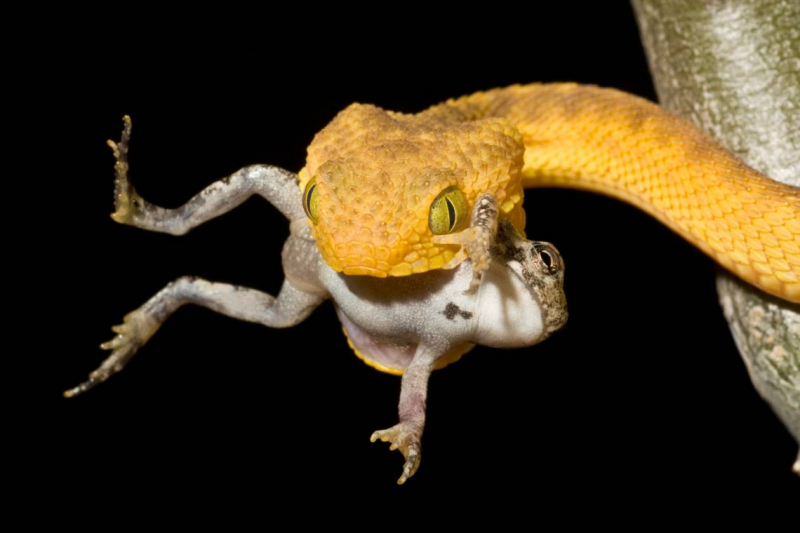
petkeen.com Nav Tombros -
A huge reptile belonging to the family Alligatoridae and the genus Alligator of the Crocodilia order is an alligator. The American and Chinese alligators are the only two species still living. Several extinct alligator species are also known from fossilized remnants. About 37 million years ago, during the Oligocene period, alligators first emerged.
Depending on their size and age, alligators eat a variety of foods. Alligators feed on fish, frogs, insects, snails, crustaceans, and snail larvae while they are young. As they grow older, they catch bigger and bigger prey, including deer, larger fish like turtles, and a variety of mammals, including coypus and muskrat. Adult alligators hunt fish, turtles, and somewhat bigger types of animals. However, alligators, especially juvenile ones, may still like eating frogs if there are a lot of them around. These carnivores really consume nearly any meat that is accessible to them. Alligators kill and ingest their prey with their sharp teeth and powerful jaws.
The alligator can move quickly in brief spurts, notably during extremely brief lunges, despite its massive bulk and poor metabolism. Frogs are little creatures that may be eaten whole in one mouthful. Larger prey may be killed by being grabbed and dragged into the water to drown. Alligators devour non-bite-sized food by letting it rot or by biting and then doing a "death roll" in which they spin or convulse frantically until bite-sized pieces of food are ripped off. The tail must bend to a large angle in relation to the body in order for the alligator to begin a death roll. A paralyzed tail prevents an alligator from rolling over in a death roll.
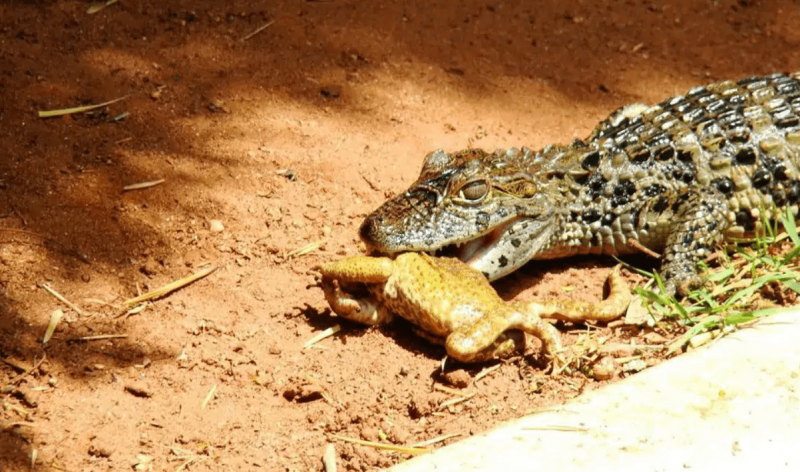
atshq.org ojatro -
While large frogs eat smaller lizards, large lizards also grab any opportunity to eat these small amphibians. However, this does not mean that lizards easily overcome the defense mechanism of predatory frogs. Therefore, the smaller and non-venomous frogs are the main targets of the lizards. If the frogs are tiny enough, most lizards have been known to devour them. The vast majority of lizard species are either omnivore or carnivorous, meaning that they will consume flesh when presented with the opportunity. Additionally, because lizards and frogs occur in a variety of sizes, interactions between the two frequently result in the smaller of the two being devoured.
Actually, some 80 distinct species of monitor lizards have been identified. Larger species of these carnivorous lizards may even hunt animals. They are large enough to regularly consume frogs, crabs, snakes, and fish.
The green tree monitor, which is prevalent in Australia and New Guinea, is one species of monitor lizard. The Komodo dragon, which may be found on the Indonesian island of Komodo, and the Nile monitor, which can be found all throughout Africa, are other varieties of monitor lizards. The biggest lizard in Asia is the Asian water monitor lizard. In nations like India, Sri Lanka, Vietnam, Cambodia, and Indonesia, it may be found close to water. The water monitor lizard may reach a maximum length of 7 feet and a maximum weight of 40 pounds.
The fact that lizards have relatively wide jaws is one of the reasons why they may consume smaller frogs. They can now pick up little prey and carry it back to their jaws thanks to this. Lizards can grab and consume their prey thanks to their keen fangs and claws.
Africa Adventures Real Life of animals: Live Feeding Documentary -
Turtles are reptiles distinguished by their shell, which can be either bony or cartilaginous and serves as a barrier to protect them. There are more than 360 identified species of turtle in the world, some of which are gravely endangered.
The diets of all turtle species vary. The remainder is herbivores, while some are carnivores or omnivores. In addition, several animals are carnivores as juveniles before developing into omnivores. The turtles that eat frogs are listed as follows: Terrapene box turtles, Chelydridae snapping turtles, Chrysemys picta painted turtles, and slider turtles (Trachemys). When they are in the water, where they belong, aquatic turtles move quicker than frogs. Therefore, if kept together, they will attack your frog and consume them. Frogs and turtles have a good likelihood of coexisting outside, though. If they come into contact, the frog's chances of survival will be reduced, and you will be the one who suffers as a result (literally). The strong defense of a turtle will stave off frog attacks even if it fights back. Additionally, a frog's fragile skin will be torn off by a turtle's powerful bite.
While the majority of turtle species can consume frogs, some cannot. The frog should not be longer than one-third the length of the turtle, and the turtle must have a specific size. A too huge frog can harm the turtle's mouth if it tries to eat it. In fact, there are many other reasons why it is not safe to feed your turtle frogs. It is vital to consult your veterinarian before feeding the turtle frogs because, for instance, certain frogs have skin secretions that might irritate or even infect the turtle's mouth, and some frogs are dangerous.
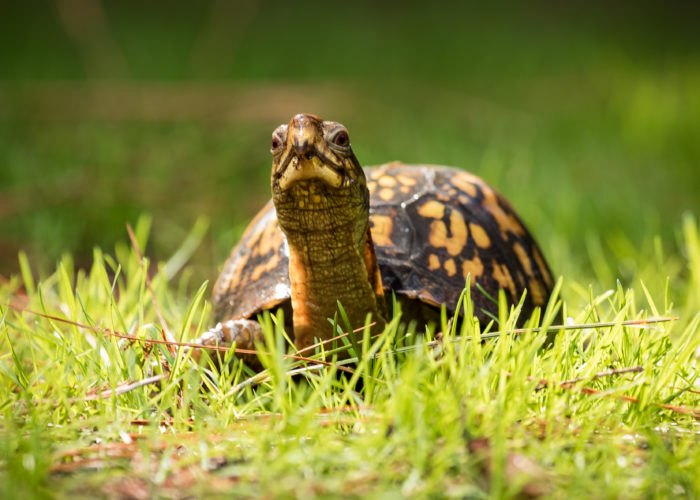
kiawahresort.com FeedPetHUB -
Large birds of the crane family resemble herons in appearance and have long necks and legs (although the two birds are unrelated). With the exception of South America and Antarctica, there are a total of 15 species of cranes that are still alive today. Because they are omnivores, cranes are opportunistic eaters that frequently alter their food to suit the seasons and their own dietary requirements. The cranes eat a variety of foods, including both plant and animal stuff. They eat seeds, leaves, nuts and acorns, berries, fruit, insects, worms, snails, tiny reptiles, animals, and birds when they are foraging on land. In marshes and agricultural areas, emergent plants' roots, rhizomes, tubers, and other portions are also eaten together with other mollusks. Fish, rats, mice, toads, frogs, salamanders, insects, berries, and cereals are some of the things they can eat.
Cranes use a variety of foraging strategies depending on the type of prey and the environment. A crane excavating for tubers and rhizomes spends some time digging and then widening a hole to get the plants out of the ground. They search for insects and animal food by gently moving forward with their heads down and probing with their bills, in contrast to this and the fixed wait and watch hunting strategies used by many herons.
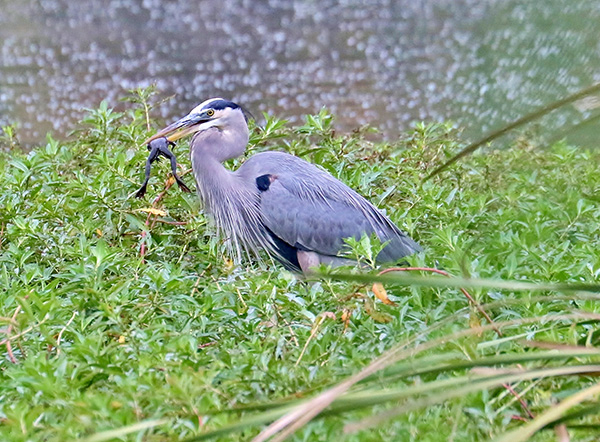
fineartamerica.com cp wild Lanka -
Hawks are carnivorous birds since they are predatory birds of prey. Carnivores do not eat any vegetation; they exclusively consume animal products. Sharp talons and beaks of birds of prey, commonly referred to as "raptors" aid in the capture of prey. Hawks need to hunt in order to survive. A hawk's diet consists of a wide variety of animals. Small animals including rabbits, squirrels, gophers, prairie dogs, mice, and chipmunks are the ones that hawks most frequently prey on. Insects like dragonflies, crickets, grasshoppers, and moth larvae as well as fish, reptiles, and amphibians including lizards, turtles, frogs, crabs, crawfish, and koi are further examples of what hawks eat.
Frogs have a reputation for being a favorite diet among hawks that live close to ponds, rivers, or other bodies of water. The most well-known frog-eating birds, however, are Red-shouldered hawks and American kestrels.
These hawks that feed on amphibians enter observation mode when they are hungry to keep an eye out for prey. In order to determine which of the frogs are susceptible, they start the monitoring process by flying in the open sky at a great height or simply from tree branches. With their keen eyesight, they can easily track amphibians from a great distance. Once the prey has been discovered, the hawk has two ways to catch it. The first is to soar straight down after flying right over the frog. Hunting on the ground is the alternate choice. After descending a short distance from the frog, the hawk soars quickly and straight up at a 90-degree angle. Wild hawks adopt one of the two strategies, so there's time to capture the frog before it even tries to jump correctly. Additionally, because the hawk is going quicker, turning is more challenging. The hawk consequently always appears from the frog's rear. Frogs, on the other hand, can only hear other frogs because of their exceedingly poor hearing. The hawk promptly uses its toes to grasp the frog once it is close enough for it to do so. The advantage of having three toes facing forward and one pointing backward is that hawks may capture any prey with ease because of their unique arrangement. As soon as they get a grip on the target, they twist and soar above. The hawk joyfully eats the frog after bringing it to a comfortable area.
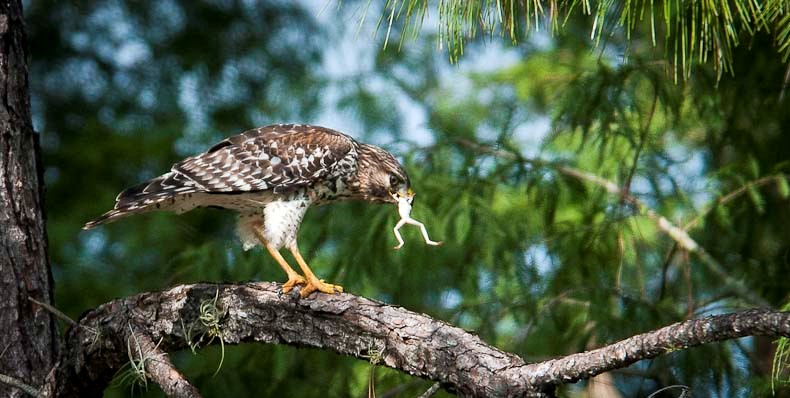
johnhayesphotography.wordpress.com Alpha Male -
Frogs often consume smaller fish, while frog tadpoles consume decomposing fish, including their eggs and larvae. The big frogs that reside in the water alongside them frequently prey on the smaller fish. Larger fish, particularly huge game fish like snook, pike, and bass, however, also hunt frogs.
Although omnivorous fish consume other creatures, many of them, including bluegill, black crappie, American cod, and blueback herring, have jaws that are too tiny to even swallow a little frog. Crustaceans, invertebrates, and tiny fish make up their primary food. They can, however, consume tadpoles if they are present in their environment. Some omnivorous fish, including carp and mirror carp, sturgeon, pumpkin, and blue sunfish, are opportunistic foragers who consume whatever they can get their hands on. Including frogs in that. Predators make up the majority of fish that enjoy eating frogs. They have rows of teeth set in powerful jaws. Fish may simply ambush their unwary victim and hunt quite swiftly.
However, fish do not always eat frogs. Some lake and river fish, such as the crescent or dusky stripe, red loach, or lamprey, are vegetarian and mostly consume algae or aquatic vegetation.
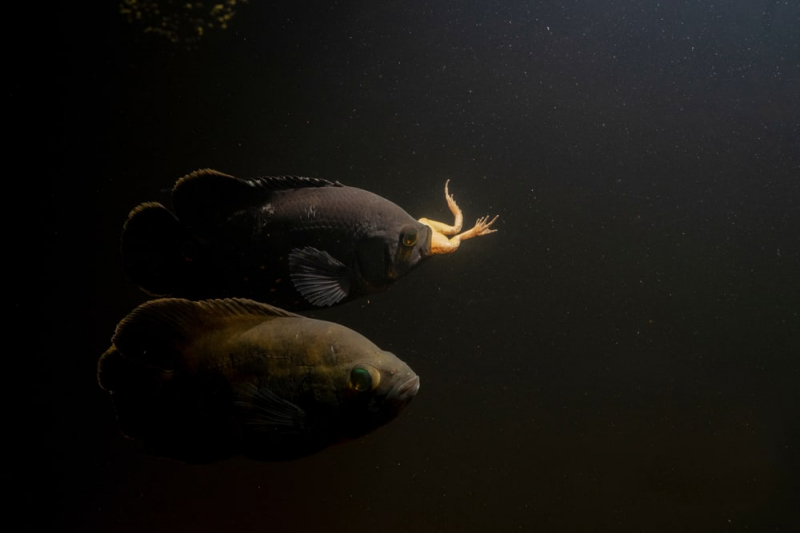
atshq.org BamaBass -
Salamanders are aquatic, semiaquatic, or terrestrial amphibians that resemble frogs more than reptiles, despite the fact that they may look more like lizards. They lack scales and claws, unlike lizards, and their skin is often quite wet. Salamanders may grow from 58 inches to several feet long, and there are more than 600 kinds of them recognized, thus their natural food is similarly diverse. Iguanas are occasionally maintained as pets, thus when they are kept as pets rather than in the wild, the amount of food available will be different.
Since the majority of salamanders are carnivores, they solely consume animal protein. Depending on their size, age, habitat, and region of the world they reside in, their specific diet will vary. In the wild, salamanders often eat worms, snails, and a variety of insects. The ability to consume mice, young snakes, lizards, tiny frogs, and other salamanders is another trait of giant salamanders. Worms, slugs, crickets, and other mollusks can be fed to captive iguanas.
Being mostly nocturnal animals, salamanders are more active when the weather is colder. They are typically discovered on trees and in caves throughout the day. For salamanders, hunting is a dynamic activity. Because they have sensory nodes on their body, they can sense their prey by listening to sound wave oscillations, which makes this possible. Most salamanders benefit from having good visual perception. Most amphibians like frogs are nocturnal, which gives salamanders an advantage in hunting thanks to their superior night vision. The salamander will use its jaws to swing to the side to grab its prey after being discovered. Like the Chinese giant salamander, they stalk their prey by sitting and waiting, then bite dead prey before consuming it.
blueandrewblue Cyril Liebrand -
Many people do not know crows are one of the Predators of Frogs that Eat Frogs. Crows exhibit a capacity for learning and problem-solving that may be unmatched among bird species. Their capacity to successfully navigate novel and challenging situations appears to be their greatest talent.
The number of predators trying to consume this very deadly frog is dropping as it spreads throughout northern Australia. Quolls, goannas, and various snakes are among the most conspicuous casualties; in some areas, they have all but disappeared. Crows, on the other hand, have figured out how to eat toads by avoiding their poisonous parts.
Crows can eat tree frogs in addition to the more common pond and farm frogs that they often eat. The majority of tree frogs are tiny and prefer to remain in trees. Crows typically perch in trees and frequently peck at this particular kind of frog. Since frogs move more slowly than these birds, pursuing them presents no difficulty. These corvids find it challenging when the frogs jump into the water. They will not likely be in danger since crows can not find them. On farms and those that cling to trees, crows frequently grab frogs.
In actuality, the crows who consume frogs may benefit nutritionally from the meal. Frogs are frequently regarded as food, even by people, in many cultures. According to the nutritional value, 32 percent, or 16 grams, of each 100 grams of frog flesh are protein. Therefore, such animals can even be a nutritious diet for crows that need protein. Frog consumption is just as risk-free for people as it is for chicken, hog, or beef. Frogs are not only a nutritious feast for scavengers like these cormorants, but they also have a terrific flavor.
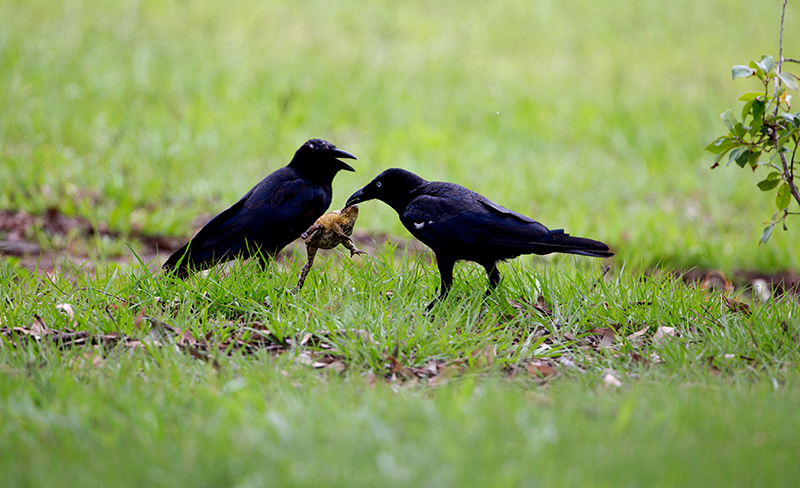
mknhs.org.uk PlasticPaddy -
Egrets are herons that often have long legs and white or buff plumage. During the mating season, they generate delicate plumes, which are typically milky white. Egrets and herons have the same physical characteristics and are not physiologically separate species. There are 11 different species of egrets, which are members of the Ardeidae family and include the cattle egret, reddish egret, white egret, and great egret. Due to heavy hunting for their plumes in the late 19th and early 20th centuries, they are an endangered bird species. As a protected species, these birds require all the assistance they can receive. One of the greatest ways to safeguard these birds is to make sure they have plenty of food to eat. Ponds, banks, streams, mudflats, and other wetlands make up their typical habitat. Since they live in calm waters, fish makes up the majority of their food. Even yet, they prefer to build their nests in wetlands that are close to water.
The ferret has a somewhat unusual method of capturing prey. They observed the animal from their position in the water, remaining still until it was within striking distance. Ferrets also consume large and tiny insects, reptiles, amphibians, and other similar creatures in addition to fish. We will go into great depth on the kind of animals and plants the stork eats and does not eat.
Egrets prefer dining in the water, and because they like to consume the flesh, they particularly enjoy eating frogs. For these enormous birds, amphibians including frogs, newts, tadpoles, toads, salamanders, and others are excellent sources of protein. They can readily walk over shallow waters in quest of food because of their strong legs, and thanks to their long necks and keen beaks, they can quickly capture frogs.
Alligators of Florida Benji Beluga












